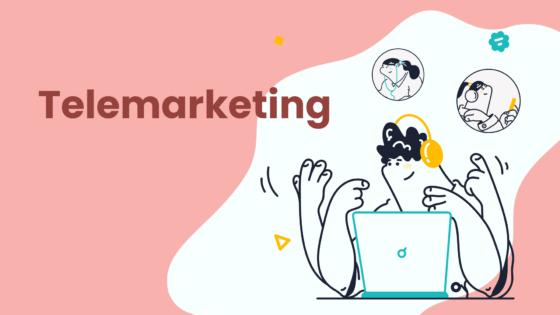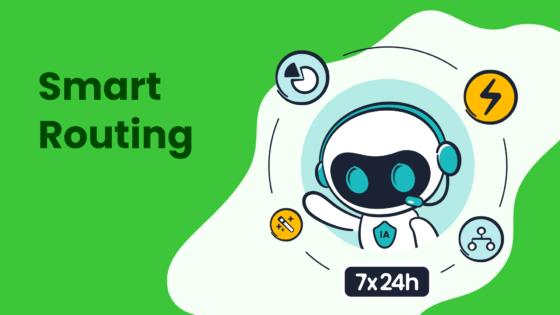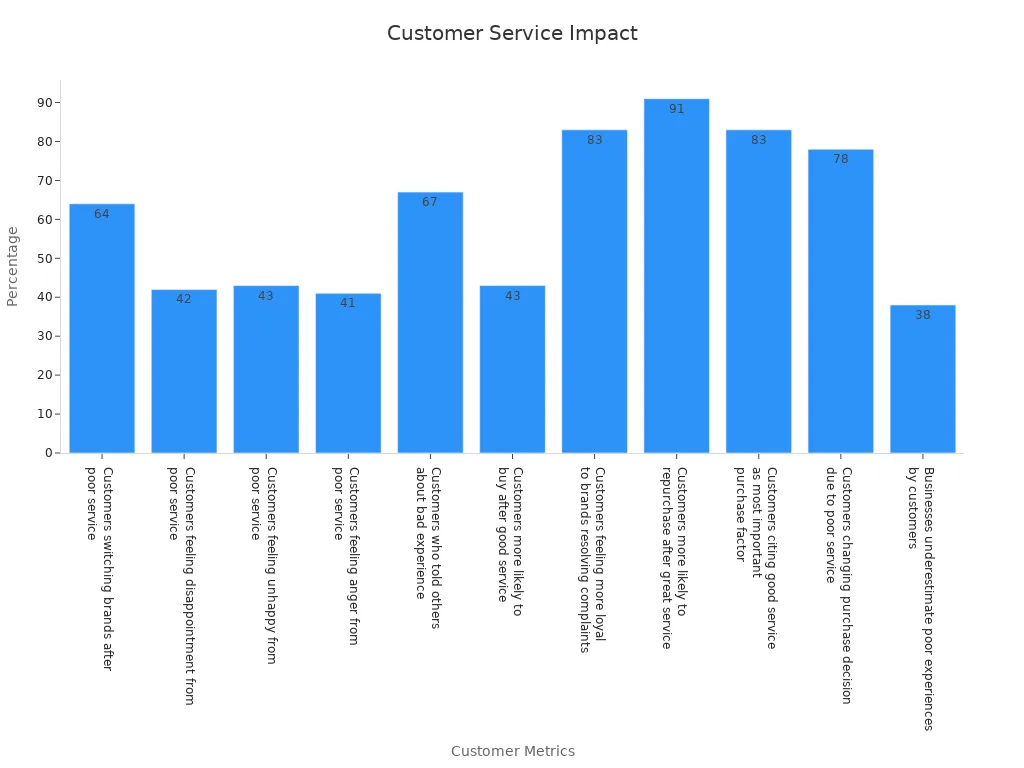Funny and Frustrating Examples of Bad Customer Service

Ever found yourself laughing at a customer service blunder, only to feel annoyed a moment later? You’re not alone. Studies show that humor in customer service can either lighten your mood or make things worse, depending on how it’s used.
- Well-timed jokes can boost your willingness to give a company another shot, but jokes at the wrong moment can add to your frustration.
- Bad service often leads to negative word-of-mouth, which hurts businesses, while great service creates loyal fans.
With Sobot and Sobot AI, companies now have tools to avoid these classic examples of bad customer service.
Examples of Bad Customer Service
Call Center Fails
You probably have your own story about calling a support line and feeling like you entered a maze. One story stands out: A customer called a telecom provider to fix a billing error. The call bounced between five different agents. Each agent asked for the same information. The customer waited on hold for over 40 minutes. In the end, the issue was not fixed. This kind of incident is not rare. Many people have stories about the worst customer service they have ever faced on the phone.
Here’s a table showing some real-world instances of call center failures and their effects:
| Case Study Focus | Documented Failings | Effects on Service Quality and Customer Outcomes |
|---|---|---|
| Telecom Provider Facing Competition and Customer Churn | Declining customer satisfaction scores, increased wait times, high call abandonment rates | Negative impact on customer loyalty and market position; need to revamp call center operations |
| Company with Inefficient Customer Service Processes | Outdated processes causing prolonged resolution times | Negative customer experience, increased churn, reduced profitability |
| High-Tech Firm with High Complaint Volume | High volume of complaints, low satisfaction ratings despite advanced products | Customer loss due to poor service, need for drastic improvement in customer service |

You can see how these stories show the worst customer service can damage trust and loyalty. When you experience a crazy customer support call, you remember it for years. Many companies struggle with these issues because of outdated systems or lack of training. Sobot’s Voice/Call Center helps avoid these problems. It uses smart call routing, a unified workspace, and AI-powered voicebots to make sure your story does not become another example of bad customer service. You get faster answers, less repetition, and a better customer service experience.
Tip: Companies that use modern call center solutions like Sobot can reduce wait times and improve first-contact resolution, making sure your story has a happy ending.
Retail Mishaps
Let’s talk about retail. Imagine you walk into a store to grab a quick snack, but the item you want is locked behind glass. You press a button for help. No one comes. You leave empty-handed and frustrated. This story happens every day. Aggressive security measures, like locking up merchandise, stop impulse buys. Research shows that 77.3% of shoppers make impulse purchases sometimes, but 32.5% of health and beauty products are locked up, making it hard for you to buy what you want.
Other stories include long lines at checkout. One incident involved a customer waiting 25 minutes in line, only to have the register break down. No apology, no solution. The customer left, vowing never to return. These examples of bad customer service hurt both sales and brand reputation.
- 73% of shoppers say long lines are the worst part of shopping.
- 80% want a personalized experience, but many stores fail to deliver.
Retailers must balance loss prevention with customer satisfaction. When they get it wrong, you get a poor customer experience and may never come back. Sobot’s omnichannel solution helps stores manage queues, personalize service, and respond quickly to complaints, so your story is about great service, not frustration.
Online Support Blunders
Online support should make life easier, but sometimes it creates the worst customer service stories. One story involves a customer who tried to reset a password. The website kept showing errors. The live chat bot gave the same answer over and over. No real help came. The customer gave up and switched brands. This incident is common in today’s digital world.
Here’s a table showing how online support errors impact trust and business:
| Error Type | Impact on Customer Trust and Behavior | Financial Consequences and User Experience Effects |
|---|---|---|
| SSL Certificate Errors | Loss of confidence in website security, hesitation to enter sensitive data | Immediate loss of sales due to abandoned transactions; long-term decline in trust and loyalty impacting revenue streams |
| 404 Errors & Broken Links | User frustration and site abandonment; harm SEO rankings | Lost potential customers and diminished site visibility, resulting in decreased traffic and sales |
| Branding/Usability Errors | Erode trust and confidence, negatively affecting user experience | Survey shows these errors jeopardize on average 18% of company revenue, emphasizing the need to fix errors promptly |
A single online support failure can cost a business thousands of dollars. For example, a website with 20,000 monthly visitors and a 5% conversion rate could lose $80,000 a month from errors. These stories show how a poor customer experience online can destroy trust and drive customers away.

You want fast, helpful answers. Sobot’s omnichannel platform uses AI and analytics to spot problems early, fix errors, and keep your story positive. When companies use tools like Sobot, they can turn a bad customer service story into a win for both you and the brand.
Note: Research shows that when companies fix mistakes quickly and fairly, you feel more loyal than if nothing had gone wrong. This is called the Service Recovery Paradox.
These examples of bad customer service—whether in call centers, retail, or online—show how a single story can shape your view of a brand. The worst customer service incidents stick with you. Companies that invest in better customer support, like Sobot’s solutions, can avoid becoming the next cautionary tale.
Terrible Customer Service Stories

Rude Staff Encounters
You walk into a store, ready to buy something you need. Instead of a smile, you get a cold stare or a rude comment. Maybe the cashier rolls their eyes or sighs loudly when you ask a question. These stories happen more often than you think. One story tells of a customer who asked for help finding a product, only to be told, “It’s over there. Can’t you see?” That single response turned a simple shopping trip into a terrible customer service experience.
Industry research shows that rude staff encounters can leave you feeling angry and disrespected. Employees sometimes face nightmare customers who yell or make unreasonable demands. This pressure can lead to emotional exhaustion and even burnout for staff. When workers feel overwhelmed, they may delay service, make inappropriate remarks, or even retaliate. You might see this in stories where a staff member snaps back at a customer or ignores them completely. These incidents create the worst customer service moments and drive people away from brands.
Remember: 32% of customers will leave a brand after just one bad experience. Rude staff can turn a small problem into a story you share with everyone you know.
Sobot’s omnichannel solution helps by giving employees the tools to manage customer complaints calmly. With a unified workspace, staff can see your history and respond with empathy, reducing frustration for both sides.
Policy Over People
Have you ever felt trapped by a company’s rules? One story stands out: A hotel guest locked himself out of his room. His ID was inside, but the front desk refused to help because of a strict policy. The employee could not make an exception, so the guest waited for hours. This kind of problem happens when companies put policy over people.
Rigid policies often make customer service stories worse. Strict return rules, long approval processes, and confusing guidelines frustrate both you and the staff. You might hear stories about nightmare customers who get angrier as the rules get stricter. Employees feel stuck, unable to solve your problem, which leads to more frustration and escalated incidents.
- Rigid policies limit creative solutions.
- Outdated rules cause confusion and slow response times.
- Policies that focus on metrics, not people, make interactions feel cold and impersonal.
Companies that review and update their policies regularly can avoid these worst customer service stories. Sobot’s platform lets teams adjust workflows quickly, so employees can focus on helping you, not just following rules.
Communication Breakdowns
You reach out for help, but no one answers. Or maybe you get a reply that makes no sense. These stories are all too common. One incident involved a customer who emailed support three times about a billing problem. Each response was a copy-paste answer that did not solve the issue. The customer gave up and shared the story online, warning others to avoid the brand.
Communication breakdowns cause big problems. Misunderstandings between you and the company lead to errors, delays, and lost trust. Research shows that 45% of people expect their issue to be fixed on the first try. When that does not happen, frustration grows. US companies lose about $75 billion each year because of poor communication in customer support. Even one bad response can turn a small issue into the worst customer service story.
Quick Tip: 63% of customers want fast replies, and 43% value politeness and empathy. Good communication can turn a bad story into a positive one.
Sobot’s omnichannel solution brings all your messages—email, chat, phone—into one place. This unified view helps agents respond faster and more accurately, so your story ends with a solution, not more problems.
Why These Stories Matter
You might think one bad story is not a big deal, but the numbers tell a different story:
- Two negative customer service experiences can make you abandon a brand.
- 17% of unhappy customers share their stories with others, spreading the word about the worst customer service.
- 80% of people say the overall experience, including communication, matters as much as the product.
When companies use tools like Sobot, they can spot problems early, fix them fast, and turn customer complaints into positive stories. That’s how you avoid becoming the next cautionary tale.
Customer Service Stories from Both Sides
The Customer’s View
You know how it feels when a simple request turns into a long, frustrating story. Maybe you waited on hold for an hour, or maybe you got a reply that made no sense. One story from a Hungarian public service shows how customers often feel lost in a maze of steps and rules. You want answers fast, and you want to feel heard. When you share your story with friends, you hope someone will listen and help. Many customer service stories start with a small problem but grow bigger when no one takes responsibility. You remember these stories because they shape how you see a brand.
The Employee’s View
Now, think about the other side. Employees have their own stories. Sometimes, they face angry customers or confusing company rules. In the same Hungarian study, workers said they wanted better tools and clear steps to help customers. One story from a retail worker showed how hard it is to stay calm when people yell or blame you for things you cannot control. Employees want to give empathetic customer service, but they need support and training. When companies use a unified workspace like Sobot, staff can see your story, understand your needs, and respond faster. This makes their job easier and your experience better.
Lessons Learned
You can learn a lot from these stories. Here are some key lessons:
- Open feedback helps everyone. Companies like Adobe and GE saw big gains when they encouraged two-way conversations.
- Training matters. Wells Fargo and Yahoo! learned that feedback systems only work when people know how to use them.
- Quick, honest responses build trust. United Airlines and KFC fixed their mistakes by being open and taking action.
- A customer-centric culture starts with empathy and the right tools. Sobot’s unified workspace brings all your stories together, so agents can help you quickly and kindly.
Remember: Every story, good or bad, teaches companies how to improve. When you and employees both feel heard, everyone wins.
Fixing Bad Customer Service
Admitting Mistakes
When you face a problem, the best customer service starts with a real apology. You want a company to admit what went wrong and take accountability. Research shows that a quick, honest apology works better than just offering money. In fact, 45% of people forgive a company after a sincere apology, but only 23% do so after getting compensation. If you hear, "We're sorry," and the company explains the problem, you feel respected. Here’s some advice:
- Apologize right away, without saying "if" or "but."
- Take clear accountability for the mistake.
- Show empathy and explain how you will fix the problem.
- Keep you updated until the problem is solved.
Companies like JetBlue and Johnson & Johnson turned bad customer service into trust by being open and making real changes. My advice? If you make a mistake, own it. Your response matters more than you think.
Fast Solutions
You want your problem fixed fast. Waiting makes bad customer service even worse. Check out these numbers:
| Metric Description | Value |
|---|---|
| Customers switching after one bad experience | 50% |
| Customers leaving after more than one bad experience | 80% |
| Increase in service requests since COVID-19 | 20% |
Half of customers leave after just one bad experience. That’s why my advice is to solve problems quickly. Empower your team to act fast. Sobot’s AI-powered tools help agents spot issues and respond right away. When you get a fast response, you feel valued. The best customer service means you never have to wait long for a solution.
Using Technology
Technology can turn bad customer service into proactive customer service. AI and analytics help companies see problems before you even notice them. Studies show that AI makes service more personal and builds trust. Here’s some advice for using technology:
- Use AI to give instant advice and answers.
- Collect feedback with mobile surveys for real-time advice.
- Let analytics guide your team to the right response.
- Make sure your system supports accountability and follow-up.
Sobot’s omnichannel platform brings all your messages together. Agents see your history and give the right advice fast. Companies in retail, banking, and tech use Sobot to improve every response and keep you happy. My advice? Use smart tools to make every problem a chance to shine.
Remember: The best customer service comes from listening, acting fast, and using the right technology. Take accountability, give honest advice, and always aim for a better response.
Why Customer Service Matters
Brand Reputation
Your brand’s reputation can make or break your business. When you give great customer service, people talk about it. They leave positive reviews and share their stories with friends. If you ignore complaints or give slow answers, you risk negative word-of-mouth. That can hurt your reputation fast.
- Customers expect you to solve problems quickly and politely.
- Bad service leads to negative reviews and lost trust.
- Companies like Amazon have built strong reputations by investing in customer service and using tools that track every interaction.
You can use platforms like Sobot to manage all your channels and keep track of every customer feedback. This helps you spot problems early and fix them before they damage your reputation.
Customer Loyalty
When you treat people well, they come back. Loyal customers buy more, forgive mistakes, and tell others about your business. Here are some facts that show how important loyalty is:
- 93% of customers are likely to make repeat purchases with companies offering excellent customer service.
- 72% would switch to a competitor after a bad experience.
- Loyal customers are five times more likely to forgive mistakes.
- A 5% increase in customer retention can boost profits by up to 85%.
- 70% of loyal customers recommend your business to others.
You can build loyalty by listening, responding fast, and making every experience personal. Sobot’s omnichannel solution helps you do this by giving your team the tools to answer questions quickly and keep every customer happy.
Continuous Improvement
Customer service is not a one-time thing. You need to keep getting better. Companies use models like Lean and Six Sigma, along with AI and analytics, to find ways to improve. Here’s a table showing how top brands use technology for continuous improvement:
| Model/Method | Technology Used | Benefit | Example Company |
|---|---|---|---|
| Lean, Six Sigma | AI, Data Analytics | Real-time feedback, faster fixes | Amazon |
| KPI-driven | Dashboards, Automation | Track progress, spot trends | Netflix |
You can follow these steps to keep improving:
- Set clear goals for your team.
- Use data to find what works and what doesn’t.
- Train your staff on new tools.
- Collect feedback from customers and employees.
- Make small changes and measure the results.
Sobot gives you real-time analytics and easy ways to collect feedback, so you always know where to improve. When you focus on continuous improvement, you keep your customers happy and your business growing.
Great customer service builds a strong reputation, keeps customers loyal, and helps you get better every day. Investing in the right tools, like Sobot, makes it easier to deliver the kind of service people remember.
You’ve seen how one story can change how you feel about a brand. When you hear customer service stories, you remember the ones where empathy and fast help made all the difference. The best stories show that a real apology, a quick fix, and the right tools—like Sobot’s omnichannel platform—turn a bad story into a win.
- Empathy makes you feel valued and turns a simple story into something special.
- 61% of people switch brands when they find better empathy elsewhere.
- Technology helps agents spot your story fast and respond with care.
Got a funny or frustrating story? Share your customer service stories below! You might help someone else avoid a bad story, and see how Sobot can make every story a good one.
FAQ
What makes a customer service story funny or frustrating?
You might laugh at a silly mistake, like a chatbot calling you “Mr. Banana.” But you get frustrated when you wait hours for help or get the same answer over and over. These customer service stories stick with you and shape your view of a brand.
Why do bad customer service experiences hurt businesses?
Bad customer service can cost companies big money. About 50% of people switch brands after one bad customer service experience. You might share your worst customer service stories online, which can damage a company’s reputation fast. Source
How can companies avoid becoming a “worst customer service” story?
You want fast, friendly help. Companies use tools like Sobot’s omnichannel solution to track every customer support request. This helps agents respond quickly and fix problems before they become bad customer service stories. Sobot’s AI even spots issues early.
What should you do if you have a bad customer service experience?
You should speak up! Share your customer service story with the company. Many brands, including those using Sobot, collect feedback to improve. If you don’t get help, try social media or review sites. Your story can help others avoid the same problem.
How does Sobot improve customer support for businesses?
Sobot brings all your messages—calls, chats, emails—into one place. Agents see your history and respond faster. With Sobot’s AI, companies fix issues quickly and avoid the worst customer service mistakes. This makes your customer service experience smoother and more personal.
See Also
How AI Agents Are Transforming Customer Support Services
Authentic Experiences From Shopify Live Chat Users
Top Ten Ways To Improve Live Chat Satisfaction
